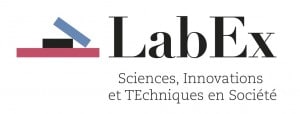Abstract
The University of Strasbourg is the birthplace of a research specialty (supramolecular chemistry or SMC) which has grown considerably in the last 40 years and has had a significant scientific impact. The emergence of SMC was orchestrated to a large extent by Nobel laureate Jean-Marie Lehn, but a network of scientists, as well as the University and the Alsace Region, were also key players in this regard. Lehn was instrumental in the creation of a series of European chemistry journals in the late 1990s, whose genealogy I trace. My purpose is to examine the conditions of the success of a case of European integration that is not a major technological program but simply a “publication infrastructure”. Based on an historical analysis completed with a fieldwork study, I argue that the circulation and appropriation of concepts and languages of the SMC were central in the development of a European “publication program”. I show that this program created a sense of Europeanness that was also shaped in relation to the extra-European world, both in opposition (standing against the USA) and yet open to the world, as illustrated in the motto “Made in Europe for the world”.
See all documents refering Cortext Manager






